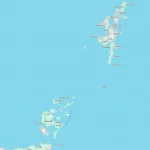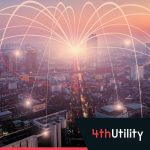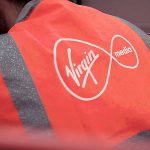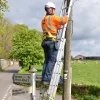Ookla Examine New Year’s Eve 23-24 City 5G Mobile Broadband Speeds

Network testing firm Ookla (i.e. Speedtest.net, Downdetector.co.uk) has used its crowdsourced data to examine how 5G mobile (mobile broadband) networks performed across a selection of major world cities, including London in the UK, during last year’s New Year’s Eve (Dec 2023) celebrations.
The study essentially analysed how 5G networks coped with the “surge in demand and change in traffic patterns” at New Year, across a selection of major cities featuring some of the largest New Year celebrations around the globe. As part of this, they focused in on median performance alongside the slowest 10th percentile, in order to evaluate the spread of performance from the median user to those experiencing more challenging network conditions.
Firstly, in terms of upload speed (this is most important when sharing social media content from big events), half the cities in their analysis recorded 10th percentile upload performance of less than 1Mbps, with speeds ranging from 0.30Mbps in Berlin, to 6.09Mbps in Dubai. London delivered a median average upload speed of 9.42Mbps, while those in the slowest 10% suffered 0.77Mbps.
Advertisement
It was a similar picture for New Year revellers based on download speeds and latency, albeit with far better overall performance. Dubai topped the table with a median download of 493.55Mbps and a 10th percentile score of 97.52Mbps, while Bangkok came last with a median of 63.25Mbps and a 10th percentile of 2.72Mbps. By comparison, London delivered a mid-table median of 109.12Mbps and a 10th percentile of 12Mbps.
As for latency (milliseconds), the fastest was Rio de Janeiro with a median of 25ms and a 10th percentile of 54ms, while the slowest was Tokyo on a median of 45ms and a 10th percentile of 64ms. Sadly, London was the 2nd slowest on a median of 42ms and a dramatically worse 10th percentile of 116ms (the slowest 10th percentile city was Sydney on 232ms).

The results are something that some people may find interesting, while also helping to highlight areas where mobile network operators may need to invest. But there aren’t too many earth-shattering revelations above, and it would have been more useful had Ookla released this back in January 2024, when the data was still fairly current and thus more reflective.
Advertisement
Mark is a professional technology writer, IT consultant and computer engineer from Dorset (England), he also founded ISPreview in 1999 and enjoys analysing the latest telecoms and broadband developments. Find me on X (Twitter), Mastodon, Facebook, BlueSky, Threads.net and Linkedin.
« Voneus to Expand Gigabit Broadband in Carmarthenshire via Street Lights
ISP G.Network Offers 300Mbps Broadband for £20 in London »























































It’s pretty obvious the user experience in Sydney would be poor because the amount of people there all in one place and it in the middle of the summer when everyone is out enjoying themselves.
Should be interesting to see how the cities fared this year. Released in late December 2025 because, well, reasons.
Its bonus time down at the the corporate OK corral – and given the time of year, glasses will be over-flowing with B,B&B (Bravado,Bullshine and Bank account receipts)
I think I’d be treating these claims in the same way as campaigning politicians pledges – once said . . in the bin.
Can’t get 5 G round here for love nor crypto currency, even though the coverage maps say all is wunderbar. And the average 4G download speed is less than the 10th percentile for 5G. And because there is a deficiency in back-haul locally, when it gets busy . . . . upload speeds exceed download.
I wonder whether the measurements were taken by a tubby bloke in a red costume standing on a Church roof holding a pair of over-sized, tin-foil wrapped, reindeer antler wired to his mobile.
Somebody ought tgo set-up a website, like Petrol Prices, where verified real-World, as opposed to marketing man fantasy readings, can be submitted by real users. That would be a nice Christmas Present.
More tedious contrarianism. This is real-world data from Ookla download tests. How would you propose that it’s ‘verified’